Samik Banerjee
Detection and skeletonization of single neurons and tracer injections using topological methods
Mar 20, 2020Abstract:Neuroscientific data analysis has traditionally relied on linear algebra and stochastic process theory. However, the tree-like shapes of neurons cannot be described easily as points in a vector space (the subtraction of two neuronal shapes is not a meaningful operation), and methods from computational topology are better suited to their analysis. Here we introduce methods from Discrete Morse (DM) Theory to extract the tree-skeletons of individual neurons from volumetric brain image data, and to summarize collections of neurons labelled by tracer injections. Since individual neurons are topologically trees, it is sensible to summarize the collection of neurons using a consensus tree-shape that provides a richer information summary than the traditional regional 'connectivity matrix' approach. The conceptually elegant DM approach lacks hand-tuned parameters and captures global properties of the data as opposed to previous approaches which are inherently local. For individual skeletonization of sparsely labelled neurons we obtain substantial performance gains over state-of-the-art non-topological methods (over 10% improvements in precision and faster proofreading). The consensus-tree summary of tracer injections incorporates the regional connectivity matrix information, but in addition captures the collective collateral branching patterns of the set of neurons connected to the injection site, and provides a bridge between single-neuron morphology and tracer-injection data.
SD-GAN: Structural and Denoising GAN reveals facial parts under occlusion
Feb 19, 2020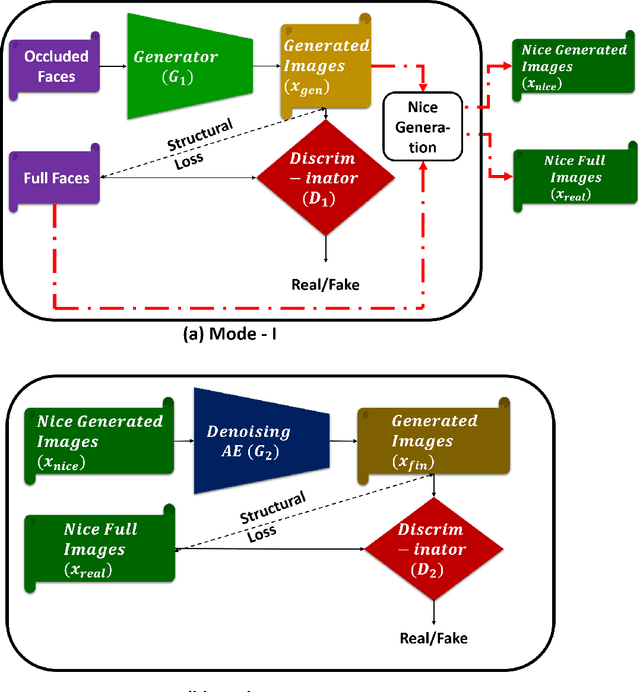
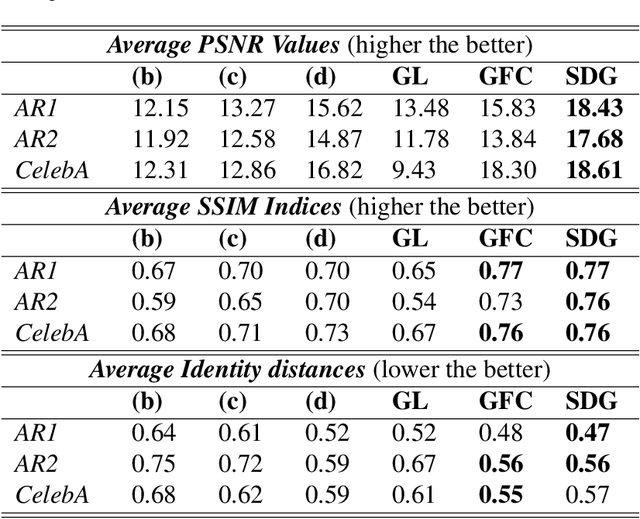
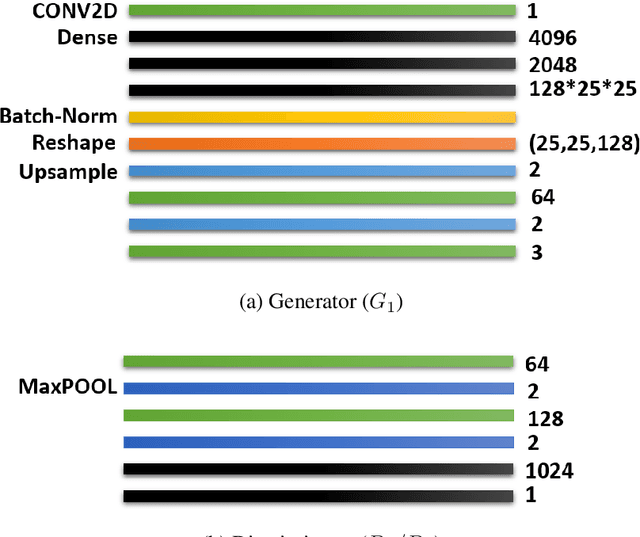
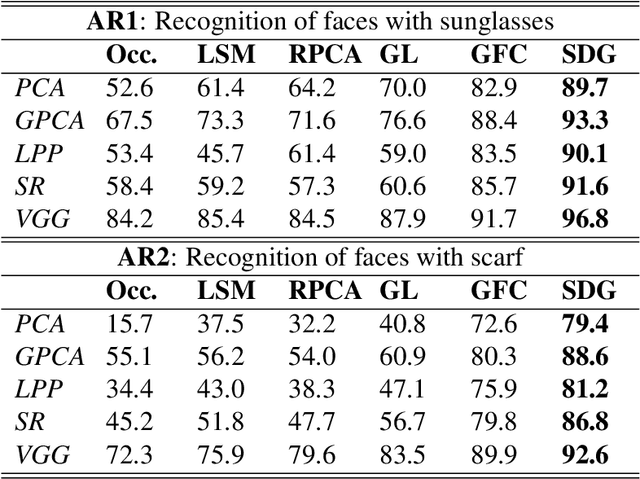
Abstract:Certain facial parts are salient (unique) in appearance, which substantially contribute to the holistic recognition of a subject. Occlusion of these salient parts deteriorates the performance of face recognition algorithms. In this paper, we propose a generative model to reconstruct the missing parts of the face which are under occlusion. The proposed generative model (SD-GAN) reconstructs a face preserving the illumination variation and identity of the face. A novel adversarial training algorithm has been designed for a bimodal mutually exclusive Generative Adversarial Network (GAN) model, for faster convergence. A novel adversarial "structural" loss function is also proposed, comprising of two components: a holistic and a local loss, characterized by SSIM and patch-wise MSE. Ablation studies on real and synthetically occluded face datasets reveal that our proposed technique outperforms the competing methods by a considerable margin, even for boosting the performance of Face Recognition.
Domain Adaptation with Soft-margin multiple feature-kernel learning beats Deep Learning for surveillance face recognition
Oct 27, 2016
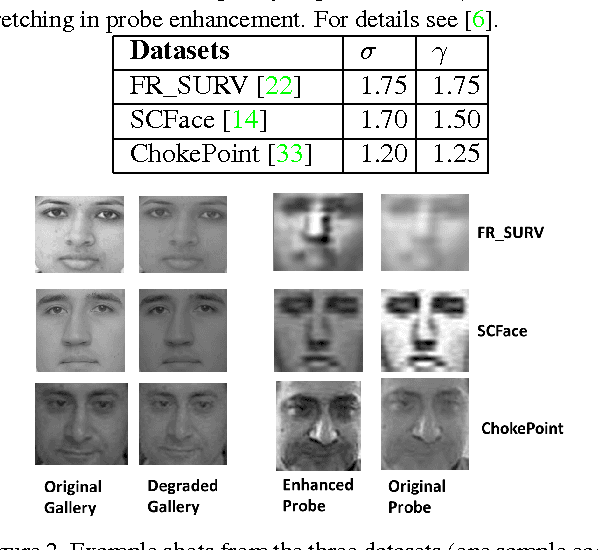
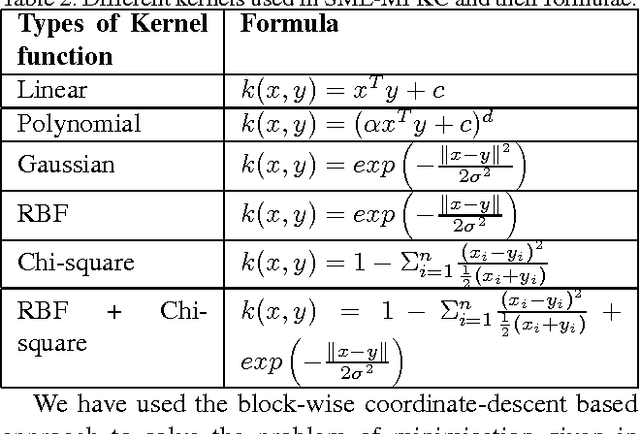
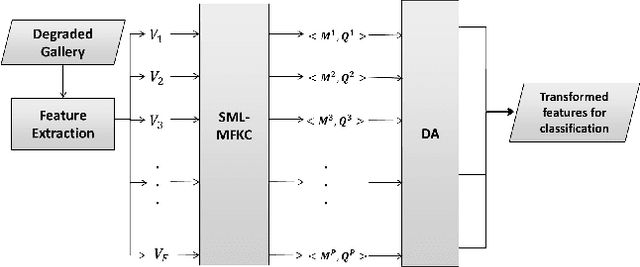
Abstract:Face recognition (FR) is the most preferred mode for biometric-based surveillance, due to its passive nature of detecting subjects, amongst all different types of biometric traits. FR under surveillance scenario does not give satisfactory performance due to low contrast, noise and poor illumination conditions on probes, as compared to the training samples. A state-of-the-art technology, Deep Learning, even fails to perform well in these scenarios. We propose a novel soft-margin based learning method for multiple feature-kernel combinations, followed by feature transformed using Domain Adaptation, which outperforms many recent state-of-the-art techniques, when tested using three real-world surveillance face datasets.
Kernel Selection using Multiple Kernel Learning and Domain Adaptation in Reproducing Kernel Hilbert Space, for Face Recognition under Surveillance Scenario
Oct 03, 2016
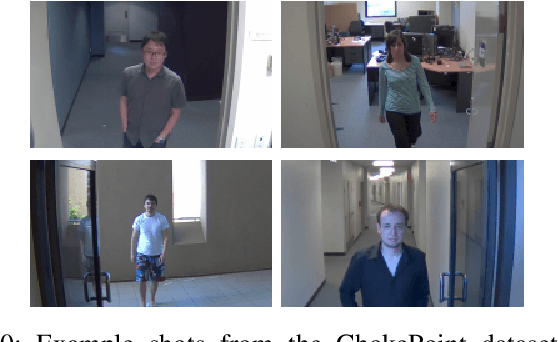
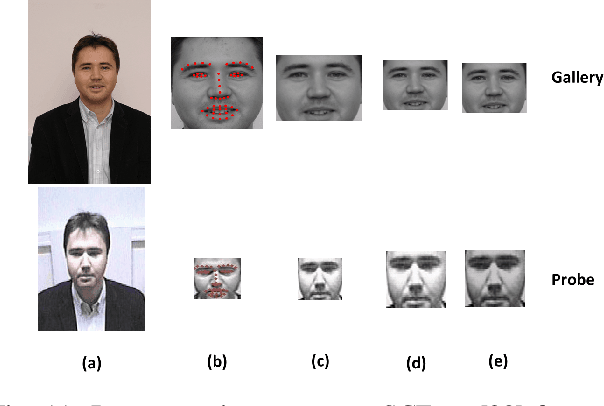
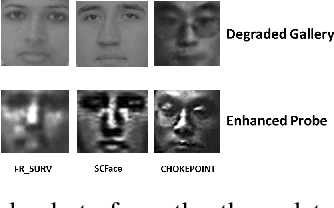
Abstract:Face Recognition (FR) has been the interest to several researchers over the past few decades due to its passive nature of biometric authentication. Despite high accuracy achieved by face recognition algorithms under controlled conditions, achieving the same performance for face images obtained in surveillance scenarios, is a major hurdle. Some attempts have been made to super-resolve the low-resolution face images and improve the contrast, without considerable degree of success. The proposed technique in this paper tries to cope with the very low resolution and low contrast face images obtained from surveillance cameras, for FR under surveillance conditions. For Support Vector Machine classification, the selection of appropriate kernel has been a widely discussed issue in the research community. In this paper, we propose a novel kernel selection technique termed as MFKL (Multi-Feature Kernel Learning) to obtain the best feature-kernel pairing. Our proposed technique employs a effective kernel selection by Multiple Kernel Learning (MKL) method, to choose the optimal kernel to be used along with unsupervised domain adaptation method in the Reproducing Kernel Hilbert Space (RKHS), for a solution to the problem. Rigorous experimentation has been performed on three real-world surveillance face datasets : FR\_SURV, SCface and ChokePoint. Results have been shown using Rank-1 Recognition Accuracy, ROC and CMC measures. Our proposed method outperforms all other recent state-of-the-art techniques by a considerable margin.
 Add to Chrome
Add to Chrome Add to Firefox
Add to Firefox Add to Edge
Add to Edge